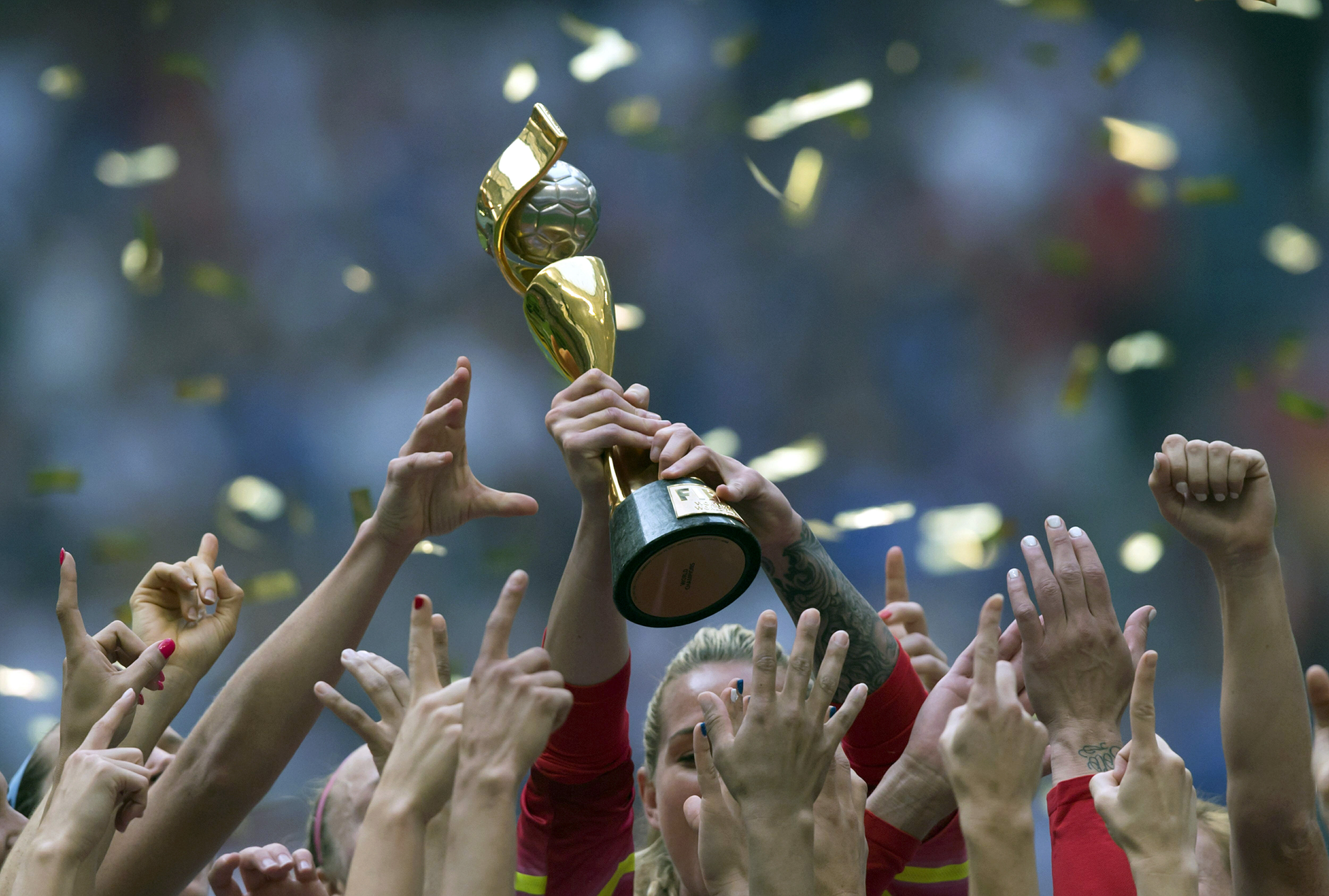
FIFA's record finances reignites World Cup pay parity debate
LONDON (AP) — When world soccer executives receive FIFA’s annual report this year, they will see that $753,000 is funding a women’s league in Colombia, $588,197 is helping female players in New Zealand and girls in Botswana are benefiting from $341,600.
That’s merely a snapshot of the $270.3 million that the body that governs world soccer has invested in projects worldwide between 2016 and 2018.
Four years since police raided the hotel and offices of soccer officials and FIFA’s Zurich headquarters in 2015 in a scandal that threatened the organization’s existence, FIFA is awash with cash. People with knowledge of FIFA’s finances told The Associated Press that in the four-year period covering the 2018 World Cup, FIFA’s reserves soared to $2.74 billion and revenue rose to $6.4 billion. The people spoke on condition of anonymity because the financial results remain confidential.
Now, the organization is eager to show that handouts no longer line the pockets of its top managers. Rather, the money is being used to build stadiums, train coaches and provide more playing opportunities. But while the annual report underscores FIFA’s financial vitality, it also highlights the glaring disparity between men and women’s soccer.
Last summer’s World Cup is a good example: France banked $38 million from FIFA for winning the championship, but the women’s champion this July will earn just $4 million.
U.S. coach Jill Ellis, who is leading her team’s title defense in France, said she is disappointed with the financial rewards.
“You want to make sure there is a fair apportionment of winnings going out,” Ellis said.
Most upsetting to critics is the fact that the financial gulf appears to be growing. FIFA has doubled the overall prize money fund to $30 million since the last Women’s World Cup in Canada in 2015. But that total amount is less than the $40 million increase that men’s World Cup prize money will get in 2022 — for a total of $440 million in prize money.
“The difference between the men’s and women’s prize money is ridiculous,” said Tatjana Haenni, who stepped down as FIFA head of women’s soccer in 2017. “It’s really disappointing the gap between the men’s and women’s World Cups got bigger. It sends the wrong message.”
The world players’ union said the disparity is a reflection of FIFA’s priorities as well as of the status of women’s soccer .
“In most countries, the pace of change has not been fast enough nor the changes progressive enough to make up for decades of neglect of the women’s game,” FIFPRO said in a statement to the AP. “Even today women’s football remains an afterthought for many of football’s male administrators and the game lags embarrassingly behind other more progressive sports and industries.
“Most troubling of all is that the gender gap in football is even widening in some areas, including the share of FIFA World Cup prize money.”
FIFA President Gianni Infantino has said critics are “perfectly justified” and have a “fair point.”
“We need to try to find what is the most balanced way and I think we made a step and there will be many more steps going ahead,” Infantino said in October before his ruling council approved the 2019 Women’s World Cup prize scale. “Maybe one day women’s football will generate more than men’s football.”
Exactly how much money women’s soccer generates is unclear, as much of FIFA’s revenue comes from top sponsors who are signed up for both World Cups.
“That’s something never really analyzed,” said Haenni, who spent 19 years at FIFA. “What is the potential value of the Women’s World Cup? Nobody knows the Women’s World Cup commercial value because it’s not sold separately. This is something that should at least be discussed.”
One of FIFA’s main sponsors is listening.
Credit card giant Visa said last week that it would support “women’s football with a marketing investment equal to our support of the men’s FIFA World Cup in Russia.” It did not disclose any figures.
Visa is one of the sponsors that stuck with FIFA through its corruption scandal, calling for the departure in 2015 of Sepp Blatter, FIFA’s then-president who was eventually banned for financial misconduct.
After being elected as Blatter’s successor in 2016, Infantino said “FIFA was clinically dead as an organization.” Now, the Swiss-Italian has the budget is in a healthy state, and is due to be re-elected unopposed in June to a four-year term.
The 2015-18 finances exceed the forecasts that were presented to the FIFA Congress in June.
While FIFA projected cash reserves to increase to $1.653 billion in the 2018 World Cup cycle, they had grown to $2.74 billion at the end of 2018, according to the people with knowledge of the finances.
Following the corruption scandal of 2015, FIFA had modestly aimed to raise $5 billion by the end of last summer’s World Cup in Russia — a projection later increased to $6.1 billion. Those expectations were eclipsed when the four-year cycle ended with revenues of $6.4 billion, according to the people with knowledge of the financial report, which shows a profit of around $1 billion.
Haenni noted the challenge lies in ensuring that FIFA’s riches don’t all go to men’s soccer.
“Some federations won’t have proper structures for the women’s teams,” Haenni said. “You want to know where the money is going and linked to creating a more balanced environment for women’s teams.”
___
More AP soccer: https://apnews.com/apf-Soccer and https://twitter.com/AP_Sports
The Western Journal has not reviewed this Associated Press story prior to publication. Therefore, it may contain editorial bias or may in some other way not meet our normal editorial standards. It is provided to our readers as a service from The Western Journal.
Truth and Accuracy
We are committed to truth and accuracy in all of our journalism. Read our editorial standards.
Advertise with The Western Journal and reach millions of highly engaged readers, while supporting our work. Advertise Today.












